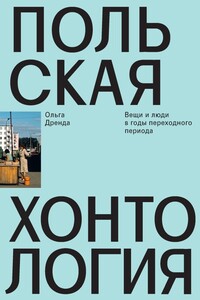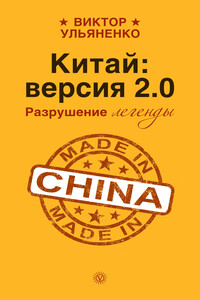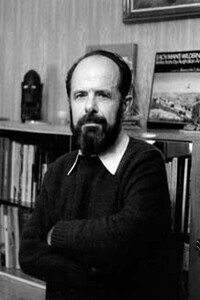Теория фильмов - [79]
Глава 4. Пост-теория, 1996–2015
1. About October // October 1 (Spring 1976): 3–5. 2. Agamben, Giorgio. Homo Sacer: Sovereign Power and Bare Life. Trans. Daniel Heller-Roazen. Stanford, CA: Stanford University Press, 1998. 3. Allen, Richard. Projecting Illusion: Film Spectatorship and the Impression of Reality. Cambridge: Cambridge University Press, 1995. 4. Allen, Richard and Murray Smith, eds. Film Theory and Philosophy. New York: Oxford University Press, 1999. 5. Andrew, Dudley. What Cinema Is! Bazin’s Quest and Its Charge. Maiden, MA: Blackwell, 2010. 6. Badiou, Alain. Cinema. Ed. Antoine de Baecque. Trans. Susan Spitzer. Maiden, MA: Polity, 2013. 7. Balio, Tino. Hollywood in the New Millennium: London: BFI, 2013. 8. Beller, Jonathan. The Cinematic Mode of Production: Attention Economy and the Society of the Spectacle. Hanover, NH: Dartmouth College Press, 2006. 9. Bolter, Jay David and Richard Grusin. Remediation: Understanding New Media. Cambridge, MA: MIT Press, 2000. 10. Bordwell, David. Narration in the Fiction Film. Madison, WI: University of Wisconsin Press, 1985. 11. Bordwell, David. Ozu and the Poetics of Cinema. Princeton, NJ: Princeton University Press, 1988. 12. Bordwell, David. Adventures in the Highlands of Theory // Screen, Vol. 29, No. 1 (Winter 1988): 72–97. 13. Bordwell, David. Making Meaning: Inference and Rhetoric in the Interpretation of Cinema. Cambridge, MA: Harvard University Press, 1989. 14. Bordwell, David. A Case for Cognitivism // Iris. No. 9 (Spring 1989): 11–40. 15. Bordwell, David. Historical Poetics of Cinema // The Cinematic Text: Methods and Approaches. Ed. R. Barton Palmer. New York: AMS Press, 1989. 16. Bordwell, David. Preaching Pluralism: Pluralism. Truth, and Scholarly Inquiry in Film Studies // Cinema Journal, Vol. 37, No. 2 (Winter 1998): 84–90. 17. Bordwell, David. Planet Hong Kong: Popular Cinema and the Art of Entertainment. Cambridge, MA: Harvard University Press, 2003. 18. Bordwell, David. The Way Hollywood Tells It: Story and Style in Modern Movies. Berkeley, CA: University of California, 2006. 19. Bordwell, David. Poetics of Cinema. New York: Routledge, 2008. 20. Bordwell, David and Noël Carroll, eds. Post-Theory: Reconstructing Film Studies. Madison, WI: University of Wisconsin Press, 1996. 21. Branigan, Edward. Narrative Comprehension and Film. New York: Routledge, 1992. 22. Brown, William. Supercinema: Film-Philosophy for the Digital Age. New York: Berghahn, 2013. 23. Brunette, Peter and David Wills. Screen/Play: Denida and Film Theory. Princeton, NJ: Princeton University Press, 1989. 24. Buckland, Warren. Critique of Poor Reason // Screen, Vol. 30, No. 4 (Autumn 1989): 80–103. 25. The Cognitive Semiotics of Film. Cambridge: Cambridge University Press, 2004. 26. Carroll, Noël. Address to the Heathen // October 23 (Winter 1982): 89–163. 27. Carroll, Noël. A Reply to Heath // October 21 (Winter 1983): 81–102. 28. Carroll, Noël. Mystifying Movies: Fads and Fallacies in Contemporary Film Theory. New York: Columbia University Press, 1988. 29. Carroll, Noël. Philosophical Problems of Classical Film Theory. Princeton, NJ: Princeton University Press, 1988. 30. Carroll, Noël. Cognitivism, Contemporary Film Theory and Method: A Response to Warren Buckland // Journal of Dramatic Theory and Criticism. Vol. 6, No. 2 (Spring 1992): 199–220. 31. Cavell, Stanley. The World Viewed: Reflections on the Ontology of Film. Cambridge, MA: Harvard University Press, 1971. 32. Colman, Felicity, ed. Film, Theory, and Philosophy: The Key Thinkers. Montreal: McGill-Queen’s University Press, 2009. 33. Crary, Jonathan. Techniques of the Observer: On Vision and Modernity in the 19th Century. Cambridge, MA: MIT Press, 1992. 34. Cubitt, Sean. The Cinema Effect. Cambridge, MA: MIT Press, 2004. 35. Deleuze, Gilles. Cinema 1: The Movement-Image. Trans. Hugh Tomlinson and Barbara Habberjam. Minneapolis, MN: University of Minnesota Press, 1986. 36. Deleuze, Gilles. Cinema 2: The Time-Image. Trans. Hugh Tomlinson and Robert Galeta. Minneapolis. MN: University of Minnesota Press, 1989. 37. Elsaesser, Thomas, ed. Early Cinema: Space, Frame, Narrative. London: BFI, 1990. 38. Flaxman, Gregory, ed. The Brain Is the Screen: Deleuze and the Philosophy of Cinema. Minneapolis, MN: University of Minnesota Press, 2000. 39. Galloway, Alexander. The Interface Effect. Maiden, MA: Polity, 2012. 40. Gitelman, Lisa. Always Already New: Media, History, and the Data of Culture. Cambridge, MA: MIT Press, 2008. 41. Harries, Dan. The New Media Book. London: BFI, 2002. 42. Heath, Stephen. Le Père Noël // October 26 (Autumn 1983): 63–115. 43. Henderson, Brian. A Critique of Film Theory. New York: E. P. Dutton, 1980. 44. Jenkins, Henry. Convergence Culture: Where Old and New Media Collide. New York: New York University, 2006. 45. Jeong, Seung-Hoon. Cinematic Interfaces: Film Theory after New Media. New York: Routledge, 2013. 46. King, Barry. The Story Continues... // Screen, Vol. 28, No. 3 (Summer 1987): 56–83. 47. Kittler, Friedrich. Gramophone, Film, Typewriter. Trans. Geoffrey Winthrop-Young and Michael Wutz. Stanford, CA: Stanford University Press, 1999. 48. Lehman, Peter. Pluralism Versus the Correct Position // Cinema Journal, Vol. 36, No. 2 (Winter 1997): 114–119. 49. Lippit, Akira Mizuta. Atomic Light (Shadow Optics). Minneapolis, MN: University of Minnesota Press, 2005. 50. Manovich, Lev. The Language of New Media. Cambridge, MA: MIT Press, 2001. 51. McDonald, Paul and Janet Wasko, eds. The Contemporary Hollywood Film Industry. Maiden, MA: Blackwell, 2008. 52. McGowan, Todd. The Real Gaze: Film Theory After Lacan. New York: State University of New York, 2007. 53. McGowan, Todd. Out of Time: Desire in Atemporal Cinema. Minneapolis, MN: University of Minnesota Press, 2011. 54. McGowan, Todd and Sheila Kunkle, eds. Lacan and Contemporary Film. New York: Other Press, 2004. 55. Muller, John P. and William J. Richardson, eds. The Purloined Рое: Lacan, Denida, and Psychoanalytic Reading. Baltimore, MD: Johns Hopkins University Press, 1988. 56. Perkins, V. F. Film as Film: Understanding and Judging Movies. New York: Penguin Books, 1972. 57. Pisters, Patricia. The Neuro-Image: A Deleuzian Film-Philosophy of Digital Screen Culture. Stanford, CA: Stanford University Press, 2012. 58. Plantinga, Carl. Cognitive Film Theory: An Insider’s Appraisal // Cinemas: Revue d’Etudes Cinematographiques, Vol. 12, No. 2 (Winter 2002): 15–37. 59. Plantinga, Carl. Moving Viewers: American Film and the Spectators Experience. Berkeley, CA: University of California Press, 2009. 60. Rancière, Jacques. Film Fables. Trans. Emiliano Battista. New York: Berg, 2006. 61. Rancière, Jacques. The Future of the Image. Trans. Gregory Elliot. New York: Verso, 2007. 62. Rancière, Jacques. The Emancipated Spectator. Trans. Gregory Elliot. New York: Verso, 2007. 63. Rich, Ruby В., Chuck Kleinhans, and Julia Lesage. Report on a Conference Not Attended: The Scalpel Beneath the Suture // Jump Cut, No. 17 (April 1978): 37–38. www.ejumpcut.org/archive/onlinessays/JC17folder/ConfNotAttended. 64. Rodowick, D. N. Gilles Deleuze’s Time Machine. Durham, NC: Duke University Press, 1997. 65. Rodowick, D. N. Reading the Figural, or, Philosophy after the New Media. Durham, NC: Duke University Press, 2001. Rodowick, D. N. 66. The Virtual Life of Film. Cambridge, MA: Harvard University Press, 2007. 67. Rodowick, D. N. An Elegy for Theory // October 122 (Fall 2007): 91–109. 68. Rodowick, D. N. Elegy for Theory. Cambridge, MA: Harvard University Press, 2014. 69. Rodowick, D. N., ed. Afterimages of Gilles Deleuze’s Film Philosophy. Minneapolis, MN: University of Minnesota Press, 2010. 70. Silverman, Kaja. The Threshold of the Visible World. New York: Routledge, 1996. 71. Sobchack, Vivian. The Address of the Eye: A Phenomenology of Film Experience. Princeton, NJ: Princeton University Press, 1992. 72. Stewart, Garrett. Framed Time: Toward a Postfilmic Cinema. Chicago, IL: University of Chicago Press, 2007. 73. Thompson, Kristin. Breaking the Glass Armor: Neoformalist Film Analysis. Princeton, NJ: Princeton University Press, 1988. 74. Virilio, Paul. War and Cinema: The Logistics of Perception. Trans. Patrick Camiller. New York: Verso, 1989. 75. Žižek, Slavoj. The Sublime Object of Ideology. New York: Verso, 1989. 76. Žižek, Slavoj. Looking Awry: An Introduction to Jacques Lacan through Popular Culture. Cambridge, MA: MIT Press, 1991. 77. Žižek, Slavoj. Enjoy Your Symptom! Jacques Lacan in Hollywood and Out. New York: Routledge, 1992. 78. Žižek, Slavoj. The Fright of Real Tears: Krzysztof Kieslowski Between Theory and Post-Theory. London: BFI, 2001. 79. Žižek, Slavoj, ed. Everything You Always Wanted to Know About Lacan... But Were Afraid to Ask Hitchcock. New York: Verso, 1992.

Мир воображаемого присутствует во всех обществах, во все эпохи, но временами, благодаря приписываемым ему свойствам, он приобретает особое звучание. Именно этот своеобразный, играющий неизмеримо важную роль мир воображаемого окружал мужчин и женщин средневекового Запада. Невидимая реальность была для них гораздо более достоверной и осязаемой, нежели та, которую они воспринимали с помощью органов чувств; они жили, погруженные в царство воображения, стремясь постичь внутренний смысл окружающего их мира, в котором, как утверждала Церковь, были зашифрованы адресованные им послания Господа, — разумеется, если только их значение не искажал Сатана. «Долгое» Средневековье, которое, по Жаку Ле Гоффу, соприкасается с нашим временем чуть ли не вплотную, предстанет перед нами многоликим и противоречивым миром чудесного.

Книга антрополога Ольги Дренды посвящена исследованию визуальной повседневности эпохи польской «перестройки». Взяв за основу концепцию хонтологии (hauntology, от haunt – призрак и ontology – онтология), Ольга коллекционирует приметы ушедшего времени, от уличной моды до дизайна кассет из видеопроката, попутно очищая воспоминания своих респондентов как от ностальгического приукрашивания, так и от наслоений более позднего опыта, искажающих первоначальные образы. В основу книги легли интервью, записанные со свидетелями развала ПНР, а также богатый фотоархив, частично воспроизведенный в настоящем издании.

Перед Вами – сборник статей, посвящённых Русскому национальному движению – научное исследование, проведённое учёным, писателем, публицистом, социологом и политологом Александром Никитичем СЕВАСТЬЯНОВЫМ, выдвинувшимся за последние пятнадцать лет на роль главного выразителя и пропагандиста Русской национальной идеи. Для широкого круга читателей. НАУЧНОЕ ИЗДАНИЕ Рекомендовано для факультативного изучения студентам всех гуманитарных вузов Российской Федерации и стран СНГ.

Эти заметки родились из размышлений над романом Леонида Леонова «Дорога на океан». Цель всего этого беглого обзора — продемонстрировать, что роман тридцатых годов приобретает глубину и становится интересным событием мысли, если рассматривать его в верной генеалогической перспективе. Роман Леонова «Дорога на Океан» в свете предпринятого исторического экскурса становится крайне интересной и оригинальной вехой в спорах о путях таксономизации человеческого присутствия средствами русского семиозиса. .

Китай все чаще упоминается в новостях, разговорах и анекдотах — интерес к стране растет с каждым днем. Какова же она, Поднебесная XXI века? Каковы особенности психологии и поведения ее жителей? Какими должны быть этика и тактика построения успешных взаимоотношений? Что делать, если вы в Китае или если китаец — ваш гость?Новая книга Виктора Ульяненко, специалиста по Китаю с более чем двадцатилетним стажем, продолжает и развивает тему Поднебесной, которой посвящены и предыдущие произведения автора («Китайская цивилизация как она есть» и «Шокирующий Китай»).

Д.и.н. Владимир Рафаилович Кабо — этнограф и историк первобытного общества, первобытной культуры и религии, специалист по истории и культуре аборигенов Австралии.
